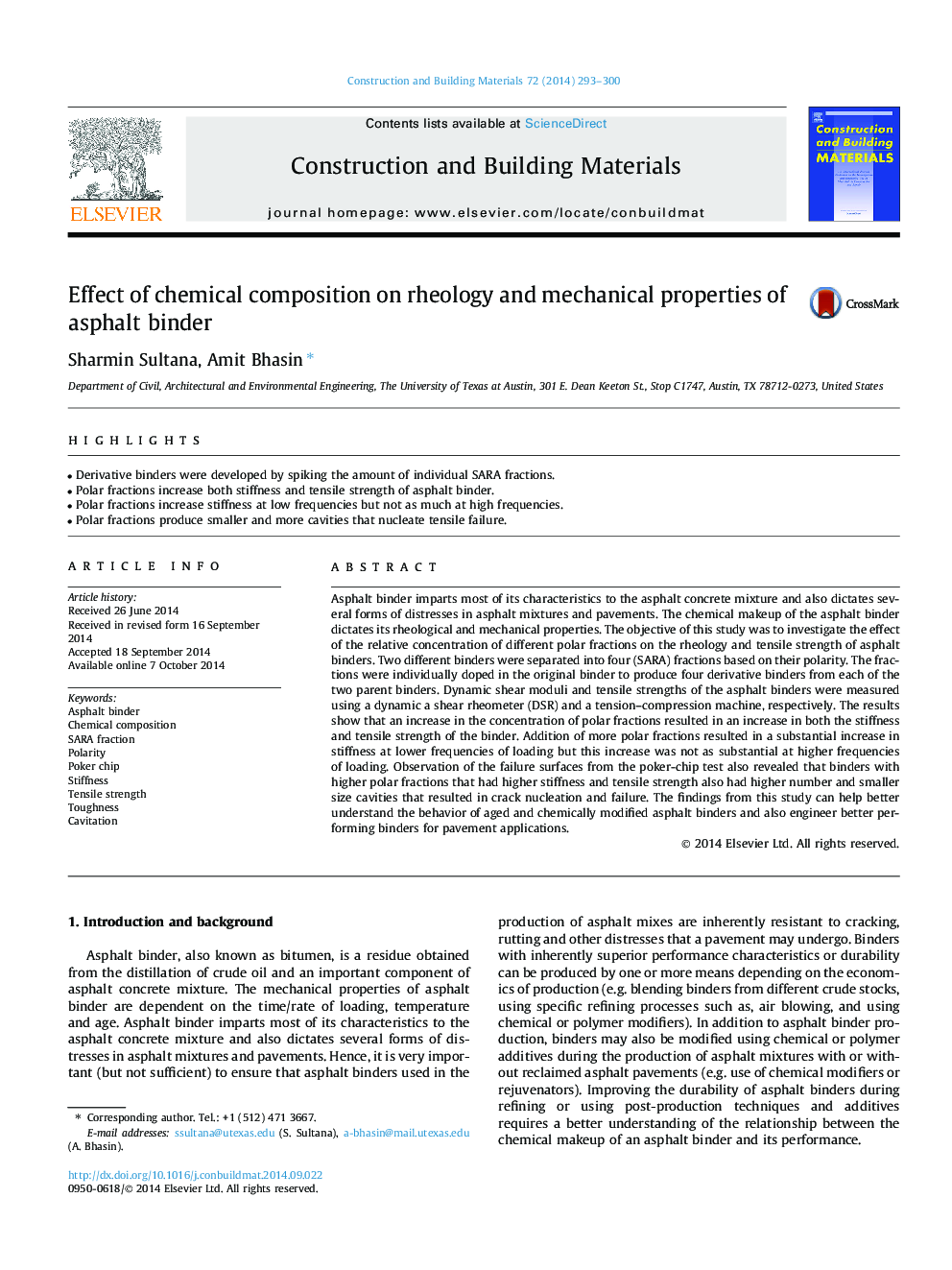| Article ID | Journal | Published Year | Pages | File Type |
|---|---|---|---|---|
| 6722167 | Construction and Building Materials | 2014 | 8 Pages |
Abstract
Asphalt binder imparts most of its characteristics to the asphalt concrete mixture and also dictates several forms of distresses in asphalt mixtures and pavements. The chemical makeup of the asphalt binder dictates its rheological and mechanical properties. The objective of this study was to investigate the effect of the relative concentration of different polar fractions on the rheology and tensile strength of asphalt binders. Two different binders were separated into four (SARA) fractions based on their polarity. The fractions were individually doped in the original binder to produce four derivative binders from each of the two parent binders. Dynamic shear moduli and tensile strengths of the asphalt binders were measured using a dynamic a shear rheometer (DSR) and a tension-compression machine, respectively. The results show that an increase in the concentration of polar fractions resulted in an increase in both the stiffness and tensile strength of the binder. Addition of more polar fractions resulted in a substantial increase in stiffness at lower frequencies of loading but this increase was not as substantial at higher frequencies of loading. Observation of the failure surfaces from the poker-chip test also revealed that binders with higher polar fractions that had higher stiffness and tensile strength also had higher number and smaller size cavities that resulted in crack nucleation and failure. The findings from this study can help better understand the behavior of aged and chemically modified asphalt binders and also engineer better performing binders for pavement applications.
Related Topics
Physical Sciences and Engineering
Engineering
Civil and Structural Engineering
Authors
Sharmin Sultana, Amit Bhasin,
